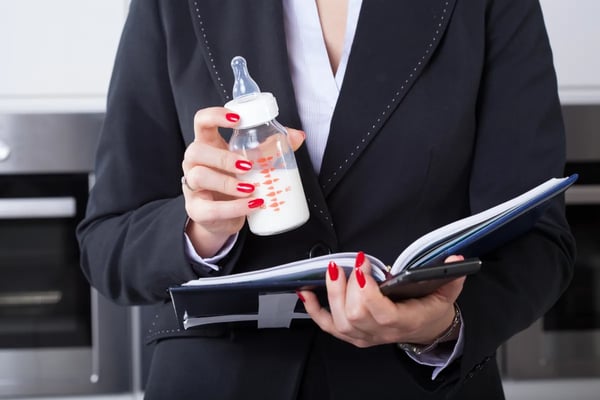Bottle Prep Checklist for Daycare: Keeping Your Baby Nourished
By Lydia Mack on October 10, 2023

Whether you’re sending breast milk or formula, organized preparation ensures that your little one remains nourished and content throughout their time at daycare.
As you tour daycares, be sure to ask:
- If bottle labels are required and/or provided.
- If baby bottles can be plastic or glass.
- How much breast milk can they store? A daily supply, weekly, etc.
- If you can see their breast milk storage area.
After you’ve selected your childcare provider, follow this comprehensive bottle prep checklist for daycare so you’ll have peace of mind knowing that your baby’s feeding needs are met with care and efficiency.
- Make sure that you have an adequate number of bottles and nipples for the week. Choose bottles that your baby is comfortable with and that are easy to clean. Opt for slow-flow nipples to mimic breastfeeding and prevent overfeeding.
- Label your baby bottles. Ask your daycare provider if they have specific breast milk labels that they’d like you to use. If not, use removable labels to clearly mark each bottle with your baby’s name and the date. This will make it easy for daycare staff to identify each bottle and ensures that the correct breast milk is given to your baby.
- Provide a written feeding schedule. Make sure to outline how much and when your baby should be fed.
- Don’t forget to include spare parts. Pack extra bottle parts such as bottle caps, collars, and nipples in case replacements are needed.
- Include instructions and contact information: Write clear instructions on how to prepare and feed the bottles. Include your contact information in case daycare staff have any questions or concerns. Many daycares like Kids & Company use mobile apps for parent and corporate communication, allowing parents to stay up-to-date on things like feedings and diaper changes, and communicate directly with their child care provider.
- Pack comfort items. If your baby has a special comfort item, like a blanket or pacifier, include it in the bag to provide a sense of familiarity during feeding times.


